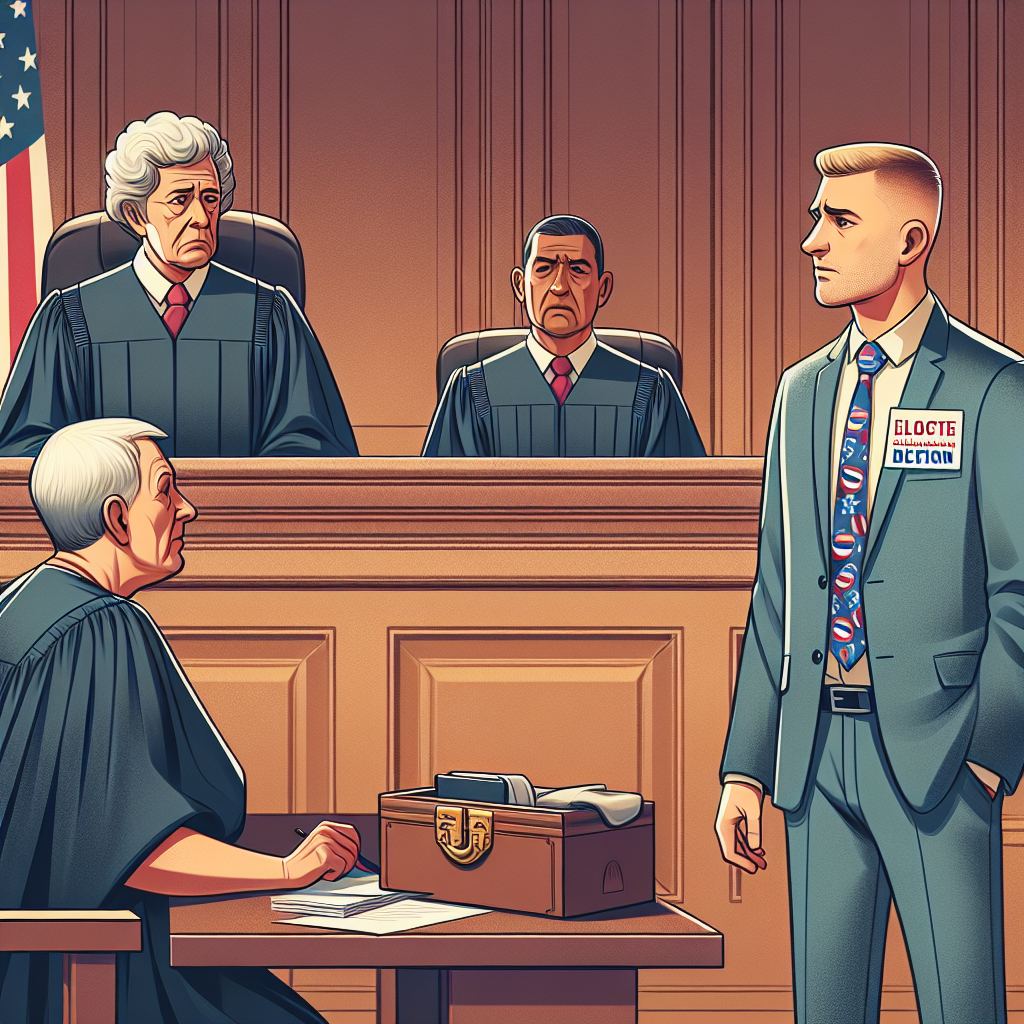The Supreme Court of the United States recently embarked on a critical review of several key sentencing cases that are poised to reshape the landscape of criminal justice in the country. The implications of these cases extend beyond the individual defendants involved, potentially affecting sentencing guidelines, judicial discretion, and the overall approach to punishment within the American legal system. As the Court navigates the complex terrain of legal principles and constitutional mandates, the decisions made in these cases will likely reverberate through various layers of the justice system, influencing everything from plea bargains to parole eligibility.
Overview of the Supreme Court’s Recent Sentencing Cases
The Supreme Court’s recent docket features high-profile sentencing cases that spotlight significant legal questions surrounding the Eighth Amendment’s prohibition against cruel and unusual punishment. Among these cases, Jones v. United States examines the constitutionality of life sentences without the possibility of parole for juvenile offenders. This case has garnered attention due to the growing recognition of the developmental differences between adolescents and adults, pushing many to argue for more lenient sentencing options for younger offenders. Similarly, United States v. Brown addresses the appropriateness of enhanced sentences based on prior convictions, raising questions about how past actions should influence current punishments.
In addition to these pivotal cases, the Court is also revisiting the longstanding issue of sentencing disparities that arise from the War on Drugs. Recent challenges, such as Smith v. United States, have brought to light concerns about racial and socioeconomic biases inherent in current sentencing practices. Many advocates argue that these disparities violate the principle of equal protection, pushing for reforms that would promote fairness and justice in sentencing outcomes. As these cases unfold, the public’s interest in the Court’s interpretations of justice continues to grow, reflecting a broader societal debate about crime and punishment.
Moreover, the complexity of these cases is underscored by the varying opinions among lower courts and legal scholars. Some courts have leaned toward more rehabilitative approaches to sentencing, while others maintain a punitive stance. This divergence has led to an urgent call for clarity from the Supreme Court, which could set unified standards applicable across the nation. As the justices deliberate, the outcomes of these cases could shape future legal precedents and impact the overall approach to sentencing in the United States.
Key Legal Principles Under Examination in Current Reviews
A central legal principle at stake in the Supreme Court’s reviews is the doctrine of proportionality, which is grounded in the Eighth Amendment. This principle asserts that the severity of a sentence should be proportionate to the gravity of the offense. In cases like Jones v. United States, advocates argue that a life sentence for juvenile offenders fails to recognize their potential for rehabilitation and the value of second chances. This legal consideration raises challenging questions about how courts balance the needs of public safety against the rights of the individual.
Another critical principle is the adequacy of judicial discretion in sentencing. As highlighted in United States v. Brown, the role of mandatory minimums and sentencing enhancements has come under scrutiny. Critics assert that such rigid frameworks can lead to disproportionately harsh penalties that do not account for the unique circumstances of each case. The Supreme Court’s deliberation on whether judges should retain more discretion could redefine how sentences are determined, moving toward a more individualized approach that considers the context of each offense.
Lastly, the intersection of federal and state sentencing guidelines presents a complex legal landscape. The Supreme Court’s ability to harmonize these guidelines is essential for maintaining uniformity in sentencing practices. Recent challenges have illuminated the inconsistencies that can arise when state laws conflict with federal standards, creating confusion and inequities in sentencing outcomes. By addressing these inconsistencies, the Court may pave the way for more cohesive guidelines that enhance fairness and clarity within the justice system.
Potential Impacts on Sentencing Guidelines and Practices
The implications of the Supreme Court’s decisions are likely to be far-reaching, with the potential to significantly alter existing sentencing guidelines. If the Court decides to adopt a more lenient stance towards juvenile sentencing, as suggested in Jones v. United States, it could lead to a substantial re-evaluation of how minors are treated within the justice system. A ruling in favor of rehabilitative approaches may encourage states to adopt legislative reforms that prioritize education and rehabilitation over punishment, ultimately impacting how juvenile offenders are perceived and treated.
Additionally, the Court’s ruling on judicial discretion could lead to a wave of changes in sentencing practices across the nation. A move toward granting judges increased leeway in determining appropriate sentences may foster a more nuanced approach to justice, allowing for varying circumstances to be taken into account. This could help address systemic inequities by reducing the reliance on mandatory minimums, which often disproportionately affect marginalized communities. The outcome of United States v. Brown could thus signal a shift towards a more equitable system aimed at reducing overall incarceration rates.
Moreover, the potential harmonization of federal and state sentencing guidelines could reform the broader landscape of criminal justice. By establishing a clearer framework, the Court could diminish the disparities that exist between jurisdictions, leading to more consistent sentencing practices across the board. This would not only enhance the predictability of outcomes for defendants but also promote public confidence in the justice system. As the Court moves forward with its reviews, the ensuing changes could redefine the parameters of justice in America.
Future Trends in Sentencing Following Court Rulings
In the wake of the Supreme Court’s anticipated rulings, a notable trend may emerge in the form of expanded sentencing alternatives. If the Court leans toward advocating for rehabilitative measures, states could begin to invest more heavily in programs that focus on diversion, mental health treatment, and addiction recovery. Such programs can help offenders reintegrate into society successfully, reducing recidivism and benefiting community safety. This shift could signal a departure from punitive approaches and toward a more holistic understanding of crime prevention.
Another trend may be the increasing involvement of public opinion in sentencing reforms. With heightened awareness of the shortcomings of the current system, advocacy groups and constituents alike are likely to push for changes that reflect societal values regarding rehabilitation and fairness. As seen in cases like Smith v. United States, public sentiment is a powerful force that can influence not only the Supreme Court but also state legislatures. A decisive ruling could empower these movements, furthering the dialogue around equity and justice in sentencing.
Finally, as technology continues to evolve, its integration into the sentencing process may become more prominent. Tools such as risk assessment algorithms, which aim to predict recidivism, could gain traction as courts seek to make informed decisions. However, this trend must be approached with caution, as these algorithms have been criticized for potentially perpetuating existing biases. As the Supreme Court reviews current cases, the dialogue surrounding the ethical implications of technology in sentencing will likely gain prominence, inviting a critical examination of how these tools can be used responsibly in pursuit of justice.
The Supreme Court’s current review of key sentencing cases holds the promise of transformative change within the American legal system. As the justices grapple with fundamental legal principles surrounding proportionality, judicial discretion, and the role of technology, their decisions will undoubtedly leave an indelible mark on future sentencing practices. The potential shift towards rehabilitative approaches, coupled with increased public engagement and technological considerations, suggests a future where the justice system may be more equitable and effective. As these cases unfold, the implications will extend well beyond the courtroom, shaping the lives of countless individuals and the very fabric of society.



